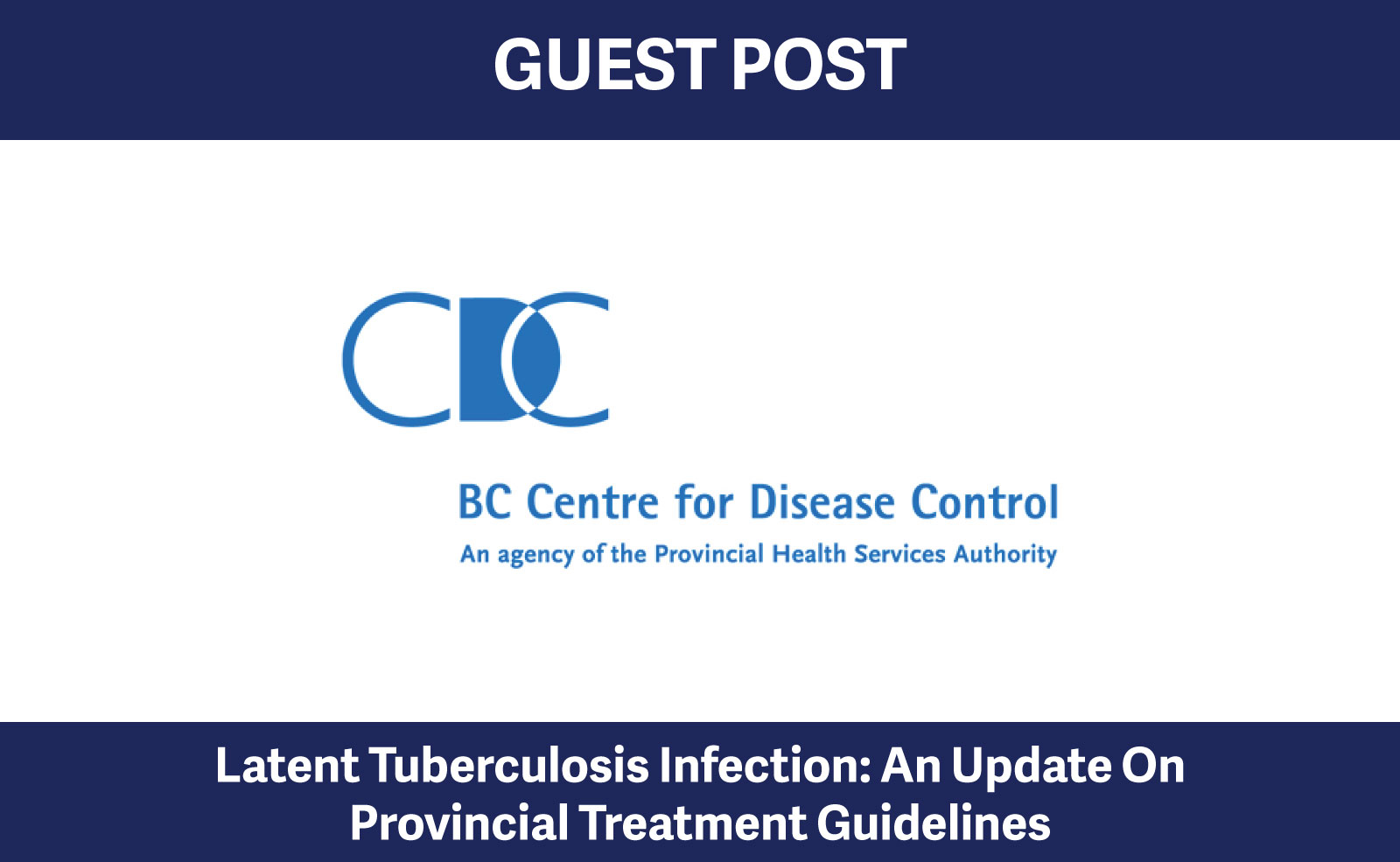Latent Tuberculosis Infection: An Update on Provincial Treatment Guidelines
Tuberculosis (TB) is an infectious disease that typically affects the lungs and is spread from person to person through the air by droplets expelled when coughing or sneezing. This disease poses a global public health threat.1 In 2016, about 10 million people fell ill with TB and about 1.7 million died worldwide from the disease. Despite efforts to eliminate this disease, TB is now the leading infectious disease killer globally and the leading killer of people living with HIV.
Approximately one quarter of the world’s population has latent (or dormant) TB which means that people have been infected with the TB bacteria but the infection has not progressed to active disease.Those with latent TB infection (LTBI) do not present with illness or symptoms and are not infectious. For some individuals, the bacteria can overcome the immune system defenses and begin to multiply resulting in the progression from LTBI to active TB disease. It is estimated that about 5 to 10 per cent of those infected with TB will go on to develop active TB at some point in their lives. The likelihood of this occurrence increases considerably for those with weakened immune systems and other comorbid illnesses.
Treatment of LTBI can substantially reduce the likelihood of activation5 and subsequent transmission, and is therefore a crucial component in preventing active TB disease. In B.C., while treatment for LTBI is voluntary, an emphasis is placed on treating those infected within the previous two years, immigrants and refugees from high TB prevalence countries, contacts of TB under five years of age, and those with risk factors that substantially increase the likelihood of progression to active TB disease - HIV infection or AIDS, chronic kidney disease, organ transplant recipients and those taking high doses of immune suppressive therapy.
In B.C., standard first line treatment for LTBI has focused on 300mg of daily self-administered isoniazid for nine months. Alternatively, isoniazid can be given twice weekly through direct observed preventative therapy (DOPT) for nine months as an option for vulnerable clients requiring intensive support to complete therapy. However poor completion rates, in part due to the length of this treatment regimen as well as drug-induced liver disease, have been an ongoing challenge for some patients. An available but less widely used alternate to the isoniazid regimen has been 600mg of daily self-administered rifampin for four months. Rifampin treatment of LTBI would typically be considered for those with intolerance to isoniazid, those exposed to an isoniazid resistant organism, or those with medication interactions to isoniazid. A building evidence base suggests that rifampin treatment of LTBI is a safer and less expensive alternative with excellent treatment completion rates. Rifampin treatment for LTBI will now be used as a first line treatment regimen in B.C.
A third regimen option for LTBI is combination isoniazid and rifapentine. Provincial TB Services at the BC Centre for Disease Control (BCCDC) has been able to obtain a one-year access to rifapentine through Health Canada’s Exceptional Circumstances Access Program. Clients seen at the provincial TB clinics may be offered this once weekly 12-week course regimen of isoniazid (900mg) and rifapentine (900mg) (referred to as 3HP) as the newest LTBI treatment option. Currently, this regimen is only offered as DOPT to eligible clients receiving care at the Vancouver or New Westminster provincial TB clinics. Expanded use of 3HP to the rest of the province will be considered in the future. Updated LTBI treatment guidelines can be found within the provincial TB Manual.
Treatment of LTBI is a crucial aspect in the global flight to eliminate TB. Clients with untreated or incompletely treated LTBI remain at risk for active TB disease. Rifampin as a first line treatment regimen, or other LTBI treatment regimens, may help improve provincial LTBI treatment completion rates. This will aid in the fight to eliminate TB.
In general, Provincial TB Services provides publicly funded medications for LTBI and active TB from the BCCDC. If you receive prescriptions at your pharmacy for medications that are indicated for LTBI or active TB disease, refer your clients to their community public health unit or to the Vancouver or New Westminster TB Clinics to access TB care. TB regimens may include, or as a combination of, isoniazid, rifampin, rifabutin, pyrazinamide, and ethambutol. Pyridoxine (Vitamin B6) prescribed ancillary to TB drugs is also funded. Check with your patient or prescriber if the indication is unclear. Please do not fill scripts for TB from your community pharmacy. Initial referrals by community pharmacies to public health is essential for optimizing TB care and monitoring drug therapies.

Shaila Jiwa
Shaila Jiwa has been a front line public health nurse for several years and received her Masters of Science in Population in Public Health. She started with the BC Centre for Disease Control in 2013 working in the Immunization Program and has recently joined the Clinical Prevention Services division at the BCCDC as the Senior Practice Leader covering tuberculosis. Shaila is responsible for maintaining the provincial tuberculosis guidelines, promoting evidence-based practice, developing provincial clinical resources and she also chairs provincial working groups related to tuberculosis.
- Guest Post

 Share
Share



